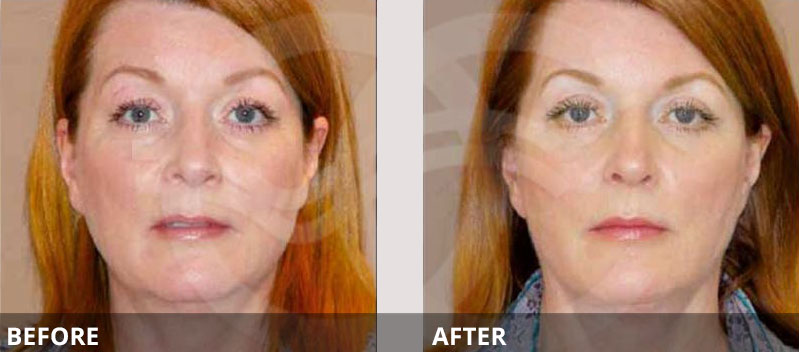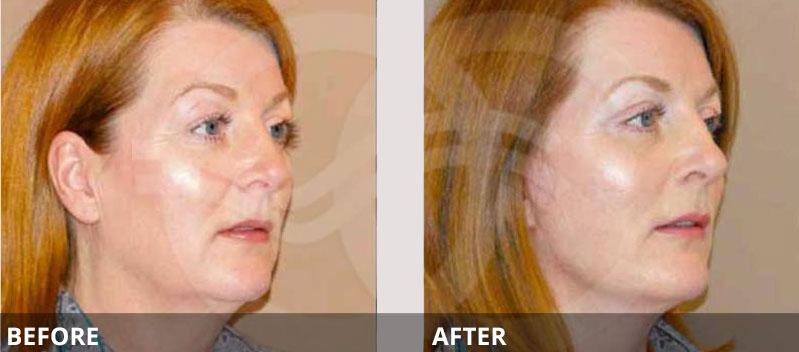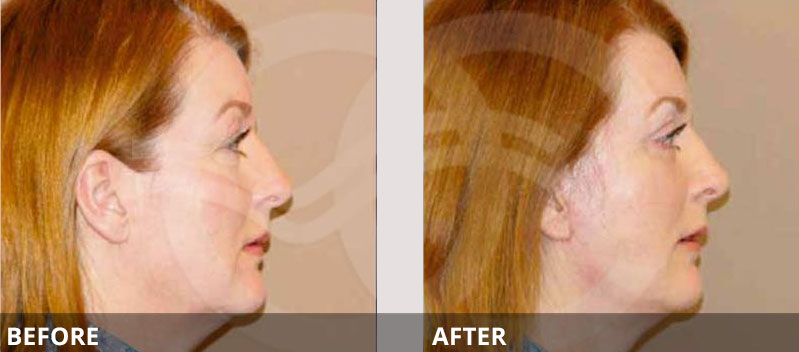MACS Facelift Explained
MACS Lift Techniques:
The MACS facelift is a revolutionary surgical procedure that targets signs of facial aging, such as sagging skin, jowls, and deep folds. Unlike traditional facelift techniques that involve horizontal skin pulling, the MACS facelift employs vertical skin lifting, providing patients with a more defined and youthful appearance while maintaining the natural positioning of the facial hairline. This technique is equally suitable for male facelifts.

Sutures and Their Importance:
During a MACS facelift, sutures play a crucial role in achieving the desired lifting effect. Sutures are medical threads used to hold the repositioned facial tissues in place, providing support and ensuring long-lasting results. It is important to choose sutures that will gradually dissolve over time, preventing any reduction in the lift’s effect as they dissolve.
Utilizing a Hemostatic Net:
In some cases, a hemostatic net is incorporated into the MACS facelift procedure. A hemostatic net is a fine mesh-like material made of biocompatible synthetic fibers or collagen. Its primary purpose is to aid in hemostasis, which involves stopping bleeding during surgery. By applying a hemostatic net over the surgical site, the surgeon ensures the sealing of small blood vessels, reducing bleeding and improving visibility during the procedure. This enables precise suturing and enhances the overall surgical outcome.

Addressing Excess Skin and Scarring:
During a MACS facelift, excess skin behind the ear and at the temple area is dealt with using incisions and sutures. The incision behind the ear will eventually be covered by the natural hairline, rendering the scarring virtually invisible. By carefully removing the surrounding excess skin, the surgeon sculpts the face, creating more defined and youthful features.
Fat Transfer for Facial Sculpting:
To further enhance facial sculpting, fat transfer techniques are utilized in a MACS facelift. This involves injecting the patient’s own fat into specific areas of the face, such as the cheeks just below the orbital rim. The amount of fat injected varies depending on the patient’s needs and desired outcome. The fat is treated using barbed and sharp cannulas, which ensure precise handling, dispersion, and embedding of the small fat particles. This technique results in natural-looking and long-lasting results.

Addressing Specific Concerns:
In addition to facial volume and sculpting, the MACS facelift technique can address specific concerns such as the nasolabial fold. Depending on the nature of the fold, the entrance point for the injection may vary. By strategically filling the area, a smoother appearance is achieved, effectively reducing the nasolabial fold. This approach has proven to be more effective than attempting to correct the fold through surgery, highlighting the versatility of the MACS facelift technique.
Considerations and Conclusion:
During the MACS facelift procedure, the surgeon takes into account various factors, including aesthetic outcomes, social aspects, angles of recovery and scarring, patient expectations, and patient reactions. By considering these factors and utilizing advanced techniques such as sutures, the hemostatic net, and vertical skin lifting, surgeons provide their patients with exceptional results and a positive surgical experience.
In conclusion, the MACS facelift incorporates several advancements in technique, leading to improved outcomes and patient satisfaction. The use of dissolvable sutures ensures long-lasting results without compromising the lift over time. The inclusion of a hemostatic net aids in controlling bleeding during the surgery, enhancing visibility for the surgeon. By lifting the skin vertically, the MACS facelift achieves a more defined and youthful appearance without altering the facial hairline. Additionally, the incorporation of fat transfer techniques allows for further facial sculpting, addressing volume loss and specific concerns. Surgeons’ meticulous approach and consideration of individual patient needs contribute to the success of the MACS facelift procedure.
